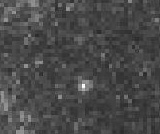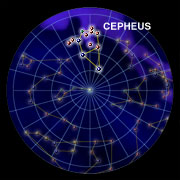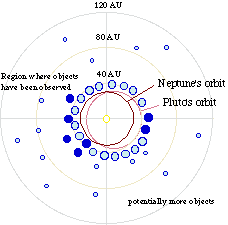What are Cepheid variables?

Cepheid variable stars are the name for a special type of variable star first discovered in the constellation Cepheus. A variable star's brightness changes over time. In the case of Cepheids, imagine your lungs expanding and contracting as you breathe. Cepheid variable stars "breathe" in the sense that they, too, are expanding and contracting, and this causes their brightness to change in a very regular (astronomers say "periodic") way.
By studying many Cepheid variable stars, astronomers discovered that how long it takes for a Cepheid to go from maximum brightness to minimum brightness and back (the star's period) depends on the stars true average brightness (the star's luminosity). Why? For a given color (or temperature), brighter stars have a larger radius. A large star takes longer to pulsate in and out. So the larger (brighter!) star has a longer period.
Cepheids are extremely important to astronomers because of their
periodic changes in brightness. The period can be used to determine
the distance to the star. Because Cepheids are intrinsically bright
stars, they can be seen far away, and astronomers can use them to
determine the distance to very distant galaxies. Knowing the distance
to far away galaxies precisely would allow astronomers to determine
the value of the Hubble constant. One of the key projects of the
Hubble Space Telescope was to determine the distances to galaxies in
the Virgo cluster by observing Cepheid variables in those galaxies.
Submitted by Henrik Berg (Norway)
(February 10, 1998)













